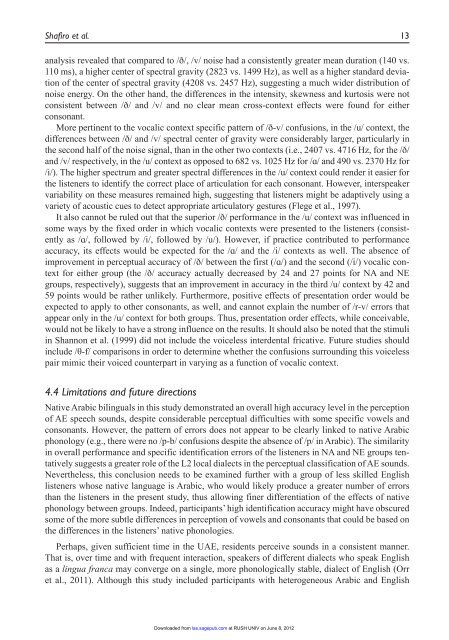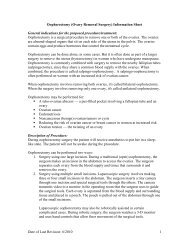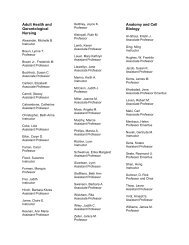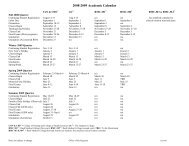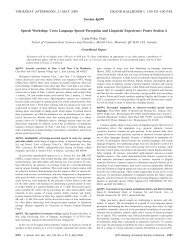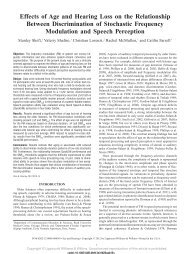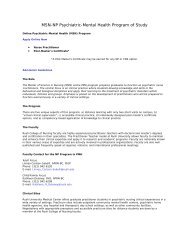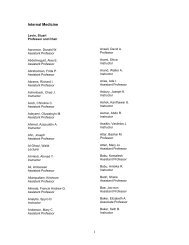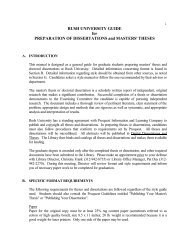English Vowels and Consonants by Native Arabic ... - Rush University
English Vowels and Consonants by Native Arabic ... - Rush University
English Vowels and Consonants by Native Arabic ... - Rush University
Create successful ePaper yourself
Turn your PDF publications into a flip-book with our unique Google optimized e-Paper software.
Shafiro et al. 13analysis revealed that compared to /ð/, /v/ noise had a consistently greater mean duration (140 vs.110 ms), a higher center of spectral gravity (2823 vs. 1499 Hz), as well as a higher st<strong>and</strong>ard deviationof the center of spectral gravity (4208 vs. 2457 Hz), suggesting a much wider distribution ofnoise energy. On the other h<strong>and</strong>, the differences in the intensity, skewness <strong>and</strong> kurtosis were notconsistent between /ð/ <strong>and</strong> /v/ <strong>and</strong> no clear mean cross-context effects were found for eitherconsonant.More pertinent to the vocalic context specific pattern of /ð-v/ confusions, in the /u/ context, thedifferences between /ð/ <strong>and</strong> /v/ spectral center of gravity were considerably larger, particularly inthe second half of the noise signal, than in the other two contexts (i.e., 2407 vs. 4716 Hz, for the /ð/<strong>and</strong> /v/ respectively, in the /u/ context as opposed to 682 vs. 1025 Hz for /ɑ/ <strong>and</strong> 490 vs. 2370 Hz for/i/). The higher spectrum <strong>and</strong> greater spectral differences in the /u/ context could render it easier forthe listeners to identify the correct place of articulation for each consonant. However, interspeakervariability on these measures remained high, suggesting that listeners might be adaptively using avariety of acoustic cues to detect appropriate articulatory gestures (Flege et al., 1997).It also cannot be ruled out that the superior /ð/ performance in the /u/ context was influenced insome ways <strong>by</strong> the fixed order in which vocalic contexts were presented to the listeners (consistentlyas /ɑ/, followed <strong>by</strong> /i/, followed <strong>by</strong> /u/). However, if practice contributed to performanceaccuracy, its effects would be expected for the /ɑ/ <strong>and</strong> the /i/ contexts as well. The absence ofimprovement in perceptual accuracy of /ð/ between the first (/ɑ/) <strong>and</strong> the second (/i/) vocalic contextfor either group (the /ð/ accuracy actually decreased <strong>by</strong> 24 <strong>and</strong> 27 points for NA <strong>and</strong> NEgroups, respectively), suggests that an improvement in accuracy in the third /u/ context <strong>by</strong> 42 <strong>and</strong>59 points would be rather unlikely. Furthermore, positive effects of presentation order would beexpected to apply to other consonants, as well, <strong>and</strong> cannot explain the number of /r-v/ errors thatappear only in the /u/ context for both groups. Thus, presentation order effects, while conceivable,would not be likely to have a strong influence on the results. It should also be noted that the stimuliin Shannon et al. (1999) did not include the voiceless interdental fricative. Future studies shouldinclude /θ-f/ comparisons in order to determine whether the confusions surrounding this voicelesspair mimic their voiced counterpart in varying as a function of vocalic context.4.4 Limitations <strong>and</strong> future directions<strong>Native</strong> <strong>Arabic</strong> bilinguals in this study demonstrated an overall high accuracy level in the perceptionof AE speech sounds, despite considerable perceptual difficulties with some specific vowels <strong>and</strong>consonants. However, the pattern of errors does not appear to be clearly linked to native <strong>Arabic</strong>phonology (e.g., there were no /p-b/ confusions despite the absence of /p/ in <strong>Arabic</strong>). The similarityin overall performance <strong>and</strong> specific identification errors of the listeners in NA <strong>and</strong> NE groups tentativelysuggests a greater role of the L2 local dialects in the perceptual classification of AE sounds.Nevertheless, this conclusion needs to be examined further with a group of less skilled <strong>English</strong>listeners whose native language is <strong>Arabic</strong>, who would likely produce a greater number of errorsthan the listeners in the present study, thus allowing finer differentiation of the effects of nativephonology between groups. Indeed, participants’ high identification accuracy might have obscuredsome of the more subtle differences in perception of vowels <strong>and</strong> consonants that could be based onthe differences in the listeners’ native phonologies.Perhaps, given sufficient time in the UAE, residents perceive sounds in a consistent manner.That is, over time <strong>and</strong> with frequent interaction, speakers of different dialects who speak <strong>English</strong>as a lingua franca may converge on a single, more phonologically stable, dialect of <strong>English</strong> (Orret al., 2011). Although this study included participants with heterogeneous <strong>Arabic</strong> <strong>and</strong> <strong>English</strong>Downloaded from las.sagepub.com at RUSH UNIV on June 8, 2012


